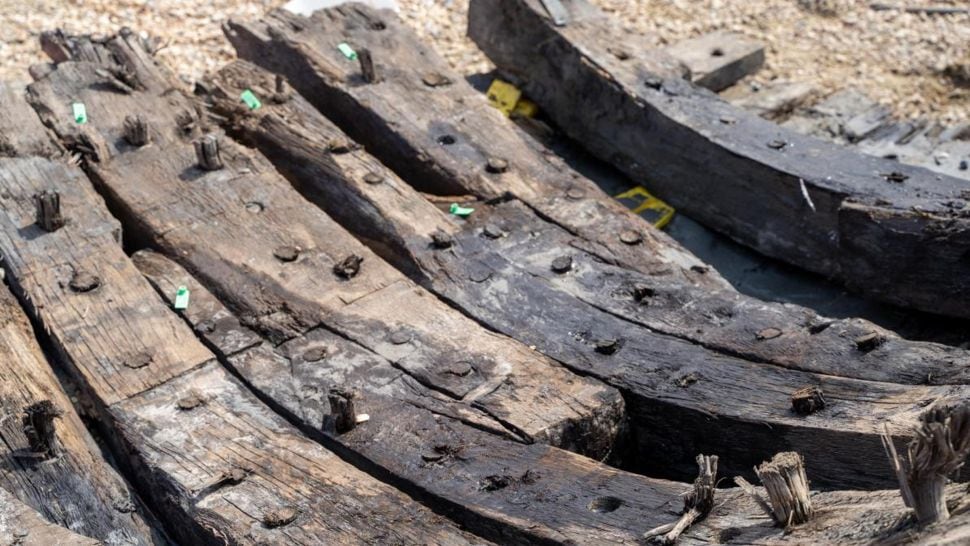
An Elizabethan-era ship in a flooded quarry
Categories: Nálezy nejenom s detektorem ve Velké Británii a Irsku
The wreck was discovered by workers in a flooded quarry about 60 kilometres from London. It dates from the Elizabethan period, which was very dynamic, especially in terms of the development of trade. Many vessels from this period have not survived, making it a very rare discovery.
A large part of the wooden hull of a rare Elizabethan-era ship was found in a flooded quarry in south-east England, a few hundred metres from the nearest coastline. Few vessels from this period have survived. Experts therefore believe that this discovery will shed new light on a key period of seafaring, when trade links were rapidly expanding across Europe thanks to the conquest of the English Channel.
"The discovery of a late 16th century ship preserved in a quarry was truly unexpected. But we are really pleased for it and of course welcome it," said archaeologist Andrea Hamel of Wessex Archaeology. She added that the examination of the remains may yield new information relating to shipbuilding.
The remains of the ship were found by Cemex workers in April this year at a quarry in Kent where gravel was being dredged. The site is located approximately sixty kilometres southeast of London. The finders duly reported the discovery to the authorities. They have secured funding for research and restoration of the ship's remains.
Experts believe that the site of the ship's remains was a coastline in the sixteenth century. The ship probably ended up there after being wrecked on a rocky headland or scrapped as unseaworthy.
Experts have already carried out a dendrochronological analysis. They have found that the ship was built from summer oak (Quercus robur) trees felled between 1558 and 1580. And it was in the newer Carvel style - made of recessed planks nailed to the inner frame, which made the boat stronger and heavier. This type of construction was developed in the Mediterranean.
Once all the analysis is complete, the ship will be reburied in the now flooded quarry to be protected by a layer of mud. Wood rots quickly in air and water and usually lasts only a few years. Unless it is protected by an anaerobic layer of sediment - a layer that protects it from oxygen.
"The remains of this ship are really significant and help us to understand not only the vessel itself but also shipbuilding in a wider context. As well as trade in the 16th century, which is considered a dynamic period," said lead researcher Antony Firth of Historic England in a statement.
Sources: www.livescience.com


The article is included in categories:



